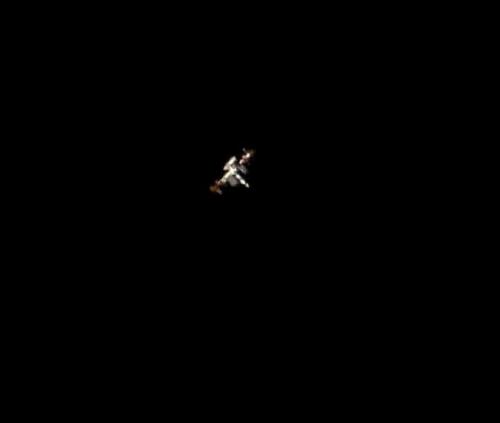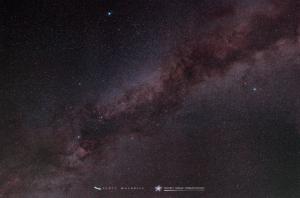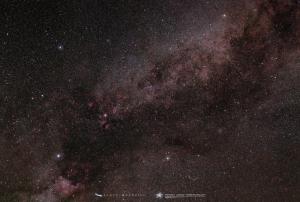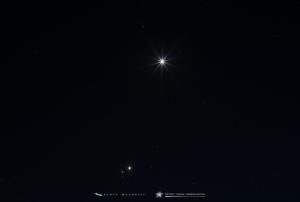Celebration of Space - June 23, 2023

The International Space Station through a telescope. Image credit: Robert Horton of Brown University.
Evening passes of China’s space station – Tiangong will wrap up over the next few nights. Even though Tiangong is not as bright as the International Space Station, it is still a very impressive sight as it passes over. Here are the remaining passes of Tiangong for the current evening viewing cycle:
Fri, June 23 at 10:24 pm, starting in the W, rising to 35°, and into orbital sunset
Sat, June 24 at 9:26 pm, starting in the W, rising to 52°, heading towards the SE, and into orbital sunset ← Awesome pass!
Sun, June 25 at 10:06 pm, starting in the W, rising to 21°, and into orbital sunset
Mon, June 26 at 9:07 pm, starting in the W, rising to 33°, heading towards the SE, and into orbital sunset
Views of Tiangong passing over will resume again on July 20, 2023, but in the morning hours during predawn. Evening passes will start up again on August 5, 2023. Even though evening passes of Tiangong are ending, the ISS will be returning to the evening sky starting Monday, July 10, 2023, and will continue daily until August 2nd. So get out and catch a view of Tiangong before it departs the evening sky. That is if New England weather will allow it. For daily satellite pass times, visit the Frosty Drew Daily Satellite Pass Prediction Utility.
Now that the Summer Solstice has passed, summer in the Northern Hemisphere is on. The days are currently at their longest, but with each passing day they are getting shorter, which gives us increasing nighttime periods. In the sky, most of the springtime constellations are setting during the twilight hours, with most summer constellations becoming prominent in the sky. One of the top symbols of summer in the night sky is not even a constellation, but instead is a collection of five constellations. It is an asterism, which can be defined as a familiar shape among the stars, but not one of the 88 official constellations. The asterism is the Summer Triangle.
The Summer Triangle is made up of three very bright stars in the sky that form a triangle that points to the south. The brightest star in the triangle is the star Vega, the west-most star, which is part of the constellation Lyra – the lyre. The second brightest star is Altair, the south-most star, which resides in the constellation Aquila – the eagle. The third star in the triangle is Deneb, which is also one of the furthest stars you can see with the naked eye, residing at 2, 600 light years distant. Deneb is part of the constellation Cygnus – the swan. Additionally, Deneb is also the top of the Northern Cross asterism, which is embedded inside the Summer Triangle. Other constellations in the triangle are Sagitta – the arrow, and Vulpecula – the fox.
Viewing the Summer Triangle is very easy, and the asterism will become more visible as we move through summer and into autumn. Right now, the triangle becomes quite visible in the ENE sky after 10:00 pm. Though in a month’s time, you will be able to see the Summer Triangle after sunset, and all night long. So, the next time you are out under the stars, take a look to the sky and see if you can spot the Summer Triangle.
For the past couple of weeks, Mars and Venus have been putting on a nice celestial dance for us in the evening sky. It is a conjunction, meaning that both objects are visibly close enough to draw our attention to them. Well, over the next couple of weeks this conjunction will continue, and Regulus, the brightest star in the constellation Leo, will be joining the party.
Regulus is a rather bright, blue star that resides very close to the ecliptic (the path the Sun takes across the sky). The ecliptic also represents the plane of the Solar System, so the primary planets of the Solar System will reside along the ecliptic too. Over the next week, Mars, Venus, and Regulus will be in conjunction. Regulus will be the most eastward star of the group, and Venus the most westward (and brightest) object. But the best time to observe this conjunction is when Mars and Regulus take over.
On July 10, 2023, Mars and Regulus will be 0.5° apart from each other in the night sky. Considering that Mars is quite red and Regulus is very blue, the two objects will start to contrast each other during the days surrounding that date. Normally, Mars looks somewhat orange-pink, and Regulus looks whitish-blue, but as they close in on each other, the contrast in colors will make the pair strikingly colorful, with Mars appearing like a dim ruby and Regulus like a sapphire. Certainly well worth a view! As the conjunction approaches we will write more about best viewing times, but for now, step outside during the evening, as astronomical twilight wanes, and look to the west to see Venus, Mars, and Regulus putting on their celestial dance.
- Author:
- Scott MacNeill
- Entry Date:
- Jun 23, 2023
- Published Under:
- Scott MacNeill's Columns




